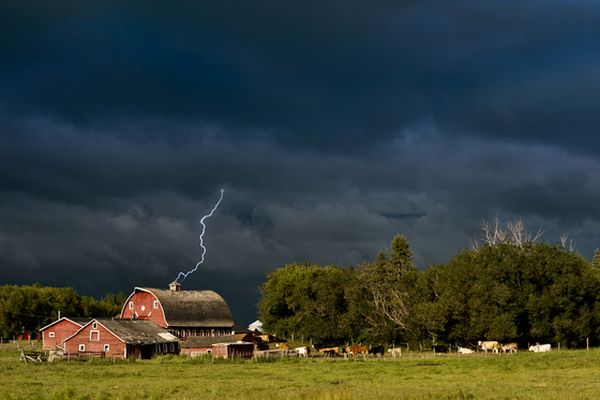EDMONTON – We all talk about the weather, as a way to break the ice or fill a lull in the conversation. It affects nearly every aspect of our lives, and soon it will be easier to know exactly what to expect from Mother Nature.

Canada’s environment minister chose a city that has had more than its fair share of extreme weather events to announce $134 million Thursday to improve the quality of forecasts and warnings. Some of the cash will go towards modernizing aging weather radar stations that monitor for tornadoes, hail and heavy rain storms.
Calgary and parts of southern Alberta have been on the receiving end of extensive flooding in 2013, numerous wind and hail storms and a heavy wet snowfall in early September that closed roads and uprooted thousands of trees.
The Insurance Bureau of Canada says 2013 was the worst year ever for severe weather insurance losses in Canada. The flooding in southern Alberta alone caused more than $1.7 billion in insured damage.
2014 wasn’t much better. Extreme weather prompted Alberta to declare the year an agricultural economic disaster, paving the way for up to $589 million in crop and hail insurance payments to producers.
Environment Minister Leona Aglukkaq said the $134 million announced on Thursday will allow significant upgrades to monitoring networks and to warning and forecast systems. It will provide more lead time for people and weather-sensitive business sectors such as agriculture, tourism and transportation to better prepare themselves for a weather event.
“It will help to continuously improve the quality of the weather forecasts and severe weather warnings to Canadians in all regions,” Aglukkaq said at a news conference.
“This would help Environment Canada better predict major events such as what we saw here in Calgary in 2013.”
Environment Canada‘s monitoring infrastructure includes 31 weather radars, 84 lightning detection sensors, 125 fixed buoys and automatic marine stations installed on ships, 31 stations for launching balloon-borne observations of the upper atmosphere, satellite data and about 1,200 surface weather and climate stations.
READ: Environment Canada admits to differing standards of weather coverage
The agency issues on average of 1.5 million public forecasts and 15,000 severe weather warnings each year.
“We realize that ensuring safety and resilience to weather events means providing reliable and accessible weather forecasts. Yet, as the second-largest country in the world in terms of land mass and (with) some of the most diverse weather on Earth, this can be a challenge,” said Aglukkaq.
“Our weather ranges from heavy snowfall, freezing rain or bitterly cold temperatures to heat waves, thunderstorms or tornadoes. Coming from Nunavut, I know from personal experience that a clear day can turn into a blizzard in minutes.”
The funding includes $107.5 million for modernizing weather monitoring networks and $26.5 million to update Environment Canada’s weather warning and forecast systems.
The money is in addition to $78.7 million for weather monitoring announced in 2011.
Want your weather on the go? Download Global News’ Skytracker weather app for iPhone, iPad and Android.
With files from The Canadian Press’s Bill Graveland.


Comments